Interview: In The Studio With Liam Hodges
By Something CuratedAs a man and a label, Liam Hodges is relaxed and unpretentious. At 6’6” tall, sporting a missing front tooth and glasses, he isn’t your average fashion designer. Hodges’ signature aesthetic demonstrates playful shapes and hardwearing workwear detailing, communicated through a strong graphic language presented on oversized t-shirts and knitwear. His influences range from hip-hop, pirate radio and punk. His work has won the support of Another Man and Showstudio, amongst others, and has been worn by eminent artists including Drake, Big Sean and FKA Twigs, to name a few. And now, after three brand defining seasons, Liam is working on a new collection. Something Curated met up with the designer at his studio off Mare Street to talk about his life, his work and doing it yourself.
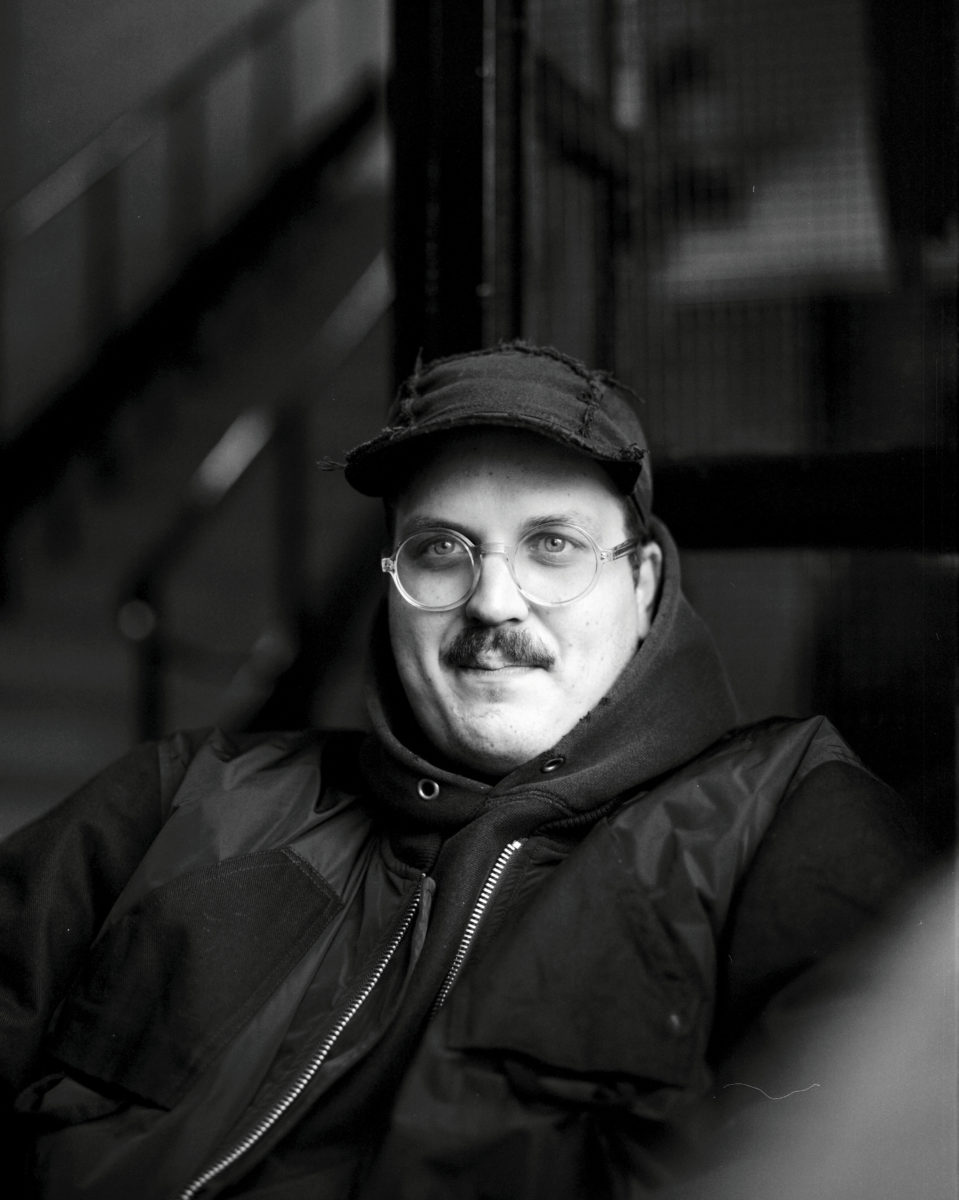
Something Curated: Where did you grow up and what was it like?
Liam Hodges: So I grew up in Medway, Kent – pretty boring place. It’s not horrible, it’s just the same as everywhere else. Growing up there was normal: go to school, try and skip school as much as possible, soon as it’s done go hang out outside the off-licence and try and get somebody to buy you some massive stupid bottle of cider and go and sit in the park for the weekend, get into trouble, you know? I always knew I wanted to move away to London, so I just got on with it. You have options: you either stay there and become some recluse or you just do what you’ve got to do and keep your head down.
SC: And why did you decide to go into fashion? Was there a turning point?
LH: Like one of those stories, “When I made my Mum’s wedding dress”? So no, there wasn’t a turning point. Never. It just happened. I went to art college, played around, did a bit of this, a bit of that. I went to fucking Rochester, did my foundation year there. I mean, Rochester was great; I had a really good time. I remember my first day though and I was really pissed off. I came back from college and my Mum said, “How was your first day?” “Shit,” I said. “Why was it shit?” “Everyone else moved to go to this place,” I said. “Why didn’t anybody tell me I could move – otherwise I would’ve moved to London rather than waiting until the year after.”
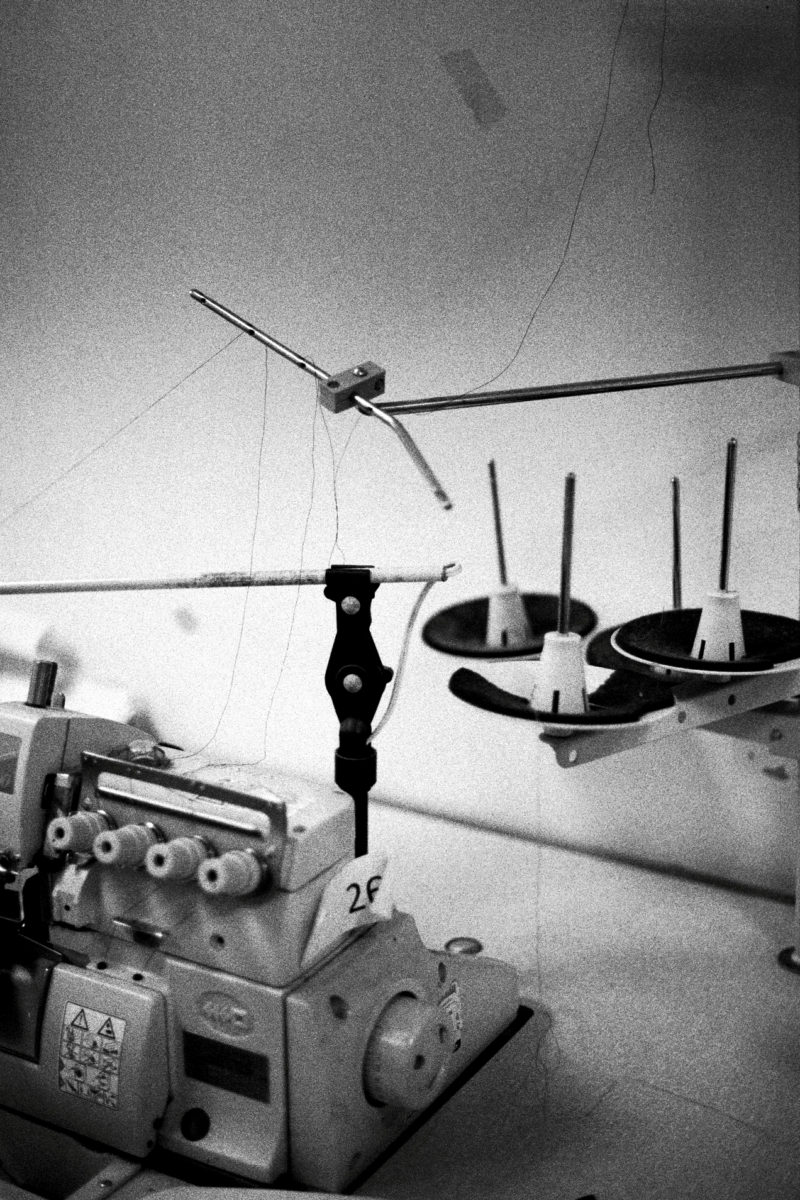
SC: The majority of students who want to study fashion usually go for Central St Martins, but you didn’t. Why did you eventually decide on Westminster for your BA?
LH: Because I went to the open day and was like, “I probably won’t have any friends if I go here!” Which, in hindsight, was very naïve of me, but it just felt like it was very much geared towards wanting to make and teach fashion in a way that didn’t feel relevant to me. The reason I chose the subject was because I enjoyed making things, trying to work out how to express myself and I didn’t really know very much. I didn’t have a great fashion history knowledge or anything and they wanted to make the next Alexander McQueen or John Galliano or this or that and I was just a bit like, I don’t know what I want to do yet! I just wanted somewhere to give me space to get on with it and work it out myself.
SC: So did you have any specific influences going into the course?
LH: Well, the year when I was applying was when Cassette Playa came about and Walter Van Beirdondonck started doing some really cool stuff again and it was the first time I felt like there was something I was interested in. Before that, I looked at fashion magazines and thought it was all just boring suits.
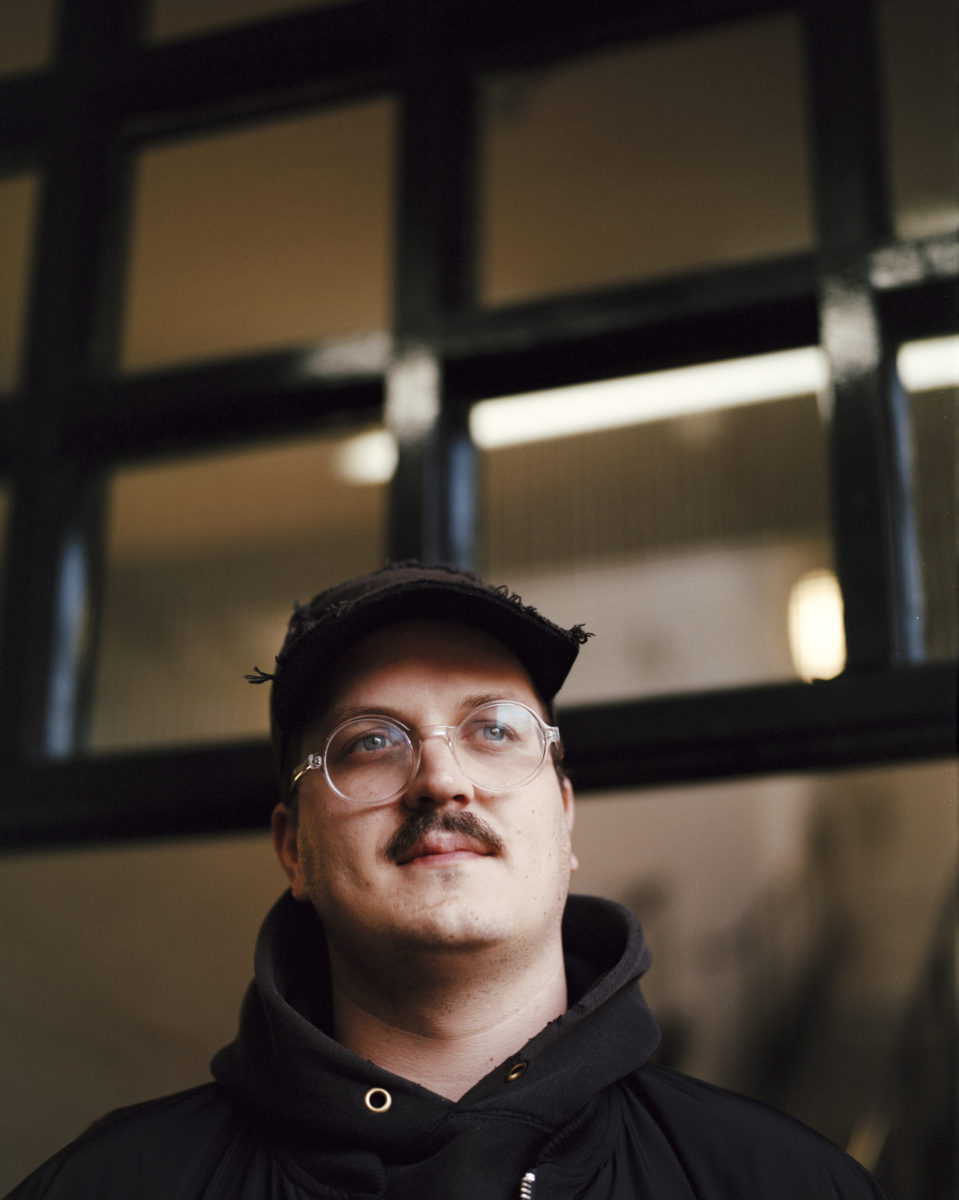
SC: And then after your BA, you studied at the RCA for your MA. How was that?
LH: Yeah, really good. Two really good years. I got to study under some great people. We had really good visiting lecturers too like Matthew Miller, James Long, Simon Foxton. I just enjoyed every minute of it, I would love to go back there.
SC: How do you think you changed over the course of your MA?
LH: Well, things just got better didn’t they? Like, things were a bit more developed, a bit more personal. I had my ideas about what I wanted to make and then I tried to make it ‘fashion’ rather than making exactly what I wanted to make. At the RCA I was given the confidence to forget about it being fashion. Just make it the way you want to make it and see what happens.
SC: How soon after the MA was it that you put together your first collection?
LH: A couple of weeks! My first presentation was at SS14. I hadn’t actually had my graduation ceremony yet because I remember I had applied to Fashion East and was kind of like freaked out and got organised. I finished the main body of my graduate collection maybe a week or two before the show. And I must’ve found out the week before my show that I got Fashion East.
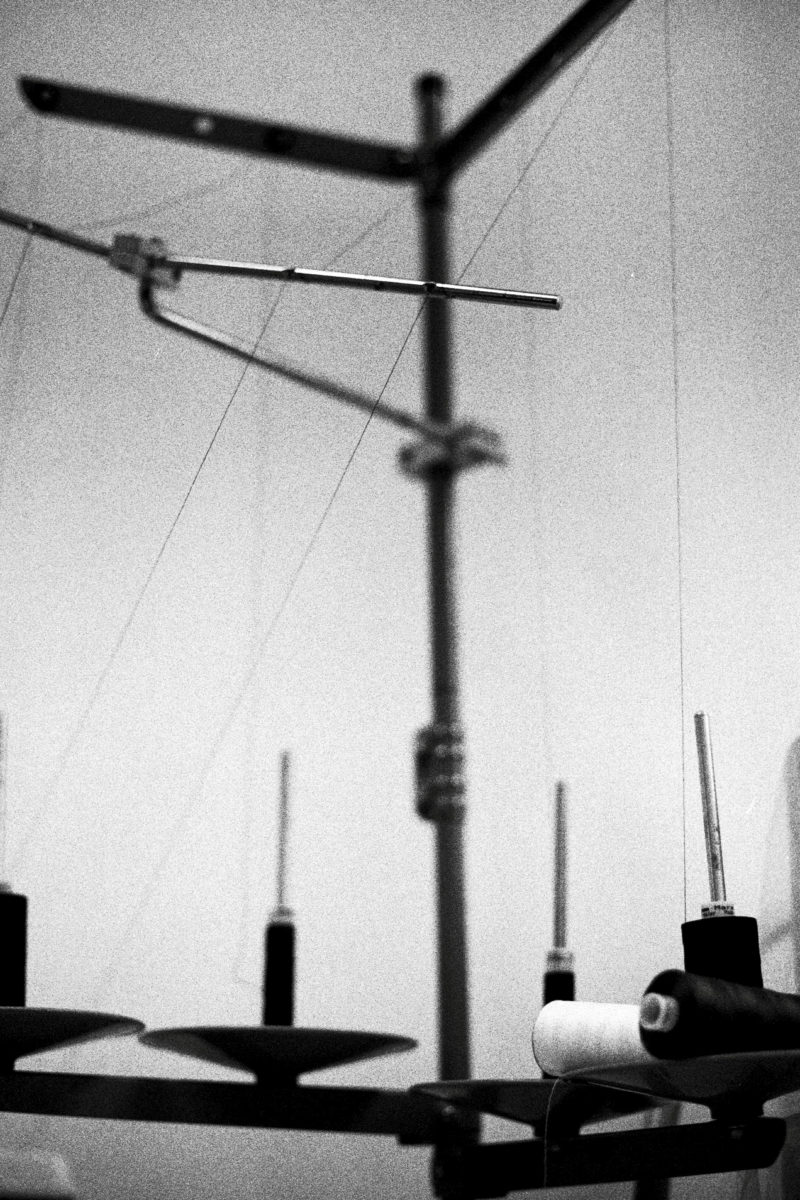
SC: Can you tell us a bit more about the zine you worked on?
LH: I did the zine with Ditto. So when I was a student I used to make my version of this zine of all my research and stuff and I would just work on bits of paper, fudge it together into a book, nuts and bolts and some gaffer tape or something. And I had a meeting with Jamie Reed – the art director at Dazed & Confused – and we were talking about books. I wanted to make something, so I showed him a few things I’d done before and he said let’s do something. I thought it would be a nice thing to do, you know? I’d worked with Ditto before, done an exhibition there. I thought it was a nice thing to have to bring together the work I’d done that season. It has some nice backstage images.
SC: Would you think of doing another project in print?
LH: It’s definitely something I’d do again. I like working with images and texts.
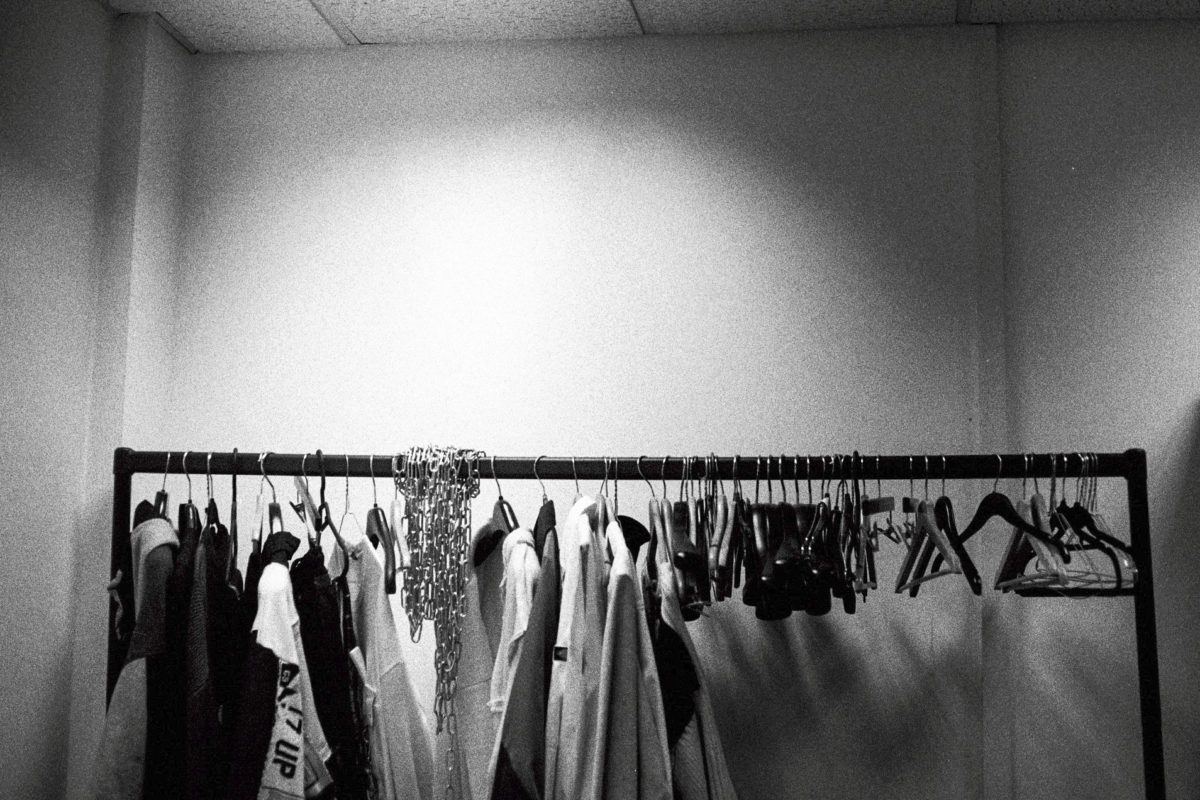
SC: How was it working with Hector Aponysus?
LH: He wrote some poems for me. It’s really easy working with him. We hang out quite a lot now. But normally, he’ll come over and I’ll be like, “This is what I’m thinking about,” and he’ll be like, “Cool.” And then I’ll come home pissed or something and send him some stream of consciousness e-mail and then he turns it into a poem. It’s very to the point. I get press releases, I get what they’re for, but they force feed information to you and you don’t really get anything beyond what the clothes are on the catwalk, whereas with the poetry it gives them another feeling. I really like that side of it.
SC: What are you working on at the moment?
LH: I’m working on a new collection for January, which is going well. I’ve been away in China teaching for two weeks and thought I have to get really organised. I want to have Christmas this year! So, I’m telling all the factories that we need samples by 10 December. So in theory, I can relax, get a bit of me time. The new stuff is kind of angsty, dystopian – which is where the ripped-up, patchwork clothes come from. My earlier work was all quite radically different, but now there is a consistency. It’s a journey with me and the person who buys the clothes. If you change all the time, it’s hard to maintain an identity. But I always try to make the collection a positive thing, rather than, “The world’s shit and bollocks.” That’s not much good for anyone. I’ve become really obsessed with HyperNormalisation by Adam Curtis. It’s fucking amazing. That’s the sort of stuff I’m into. I watched it all the way through and it lays out all these things that are wrong in the world, but there’s a weird positivity to what he does. Visually the way he montages stuff is great and is quite similar to the way I work.
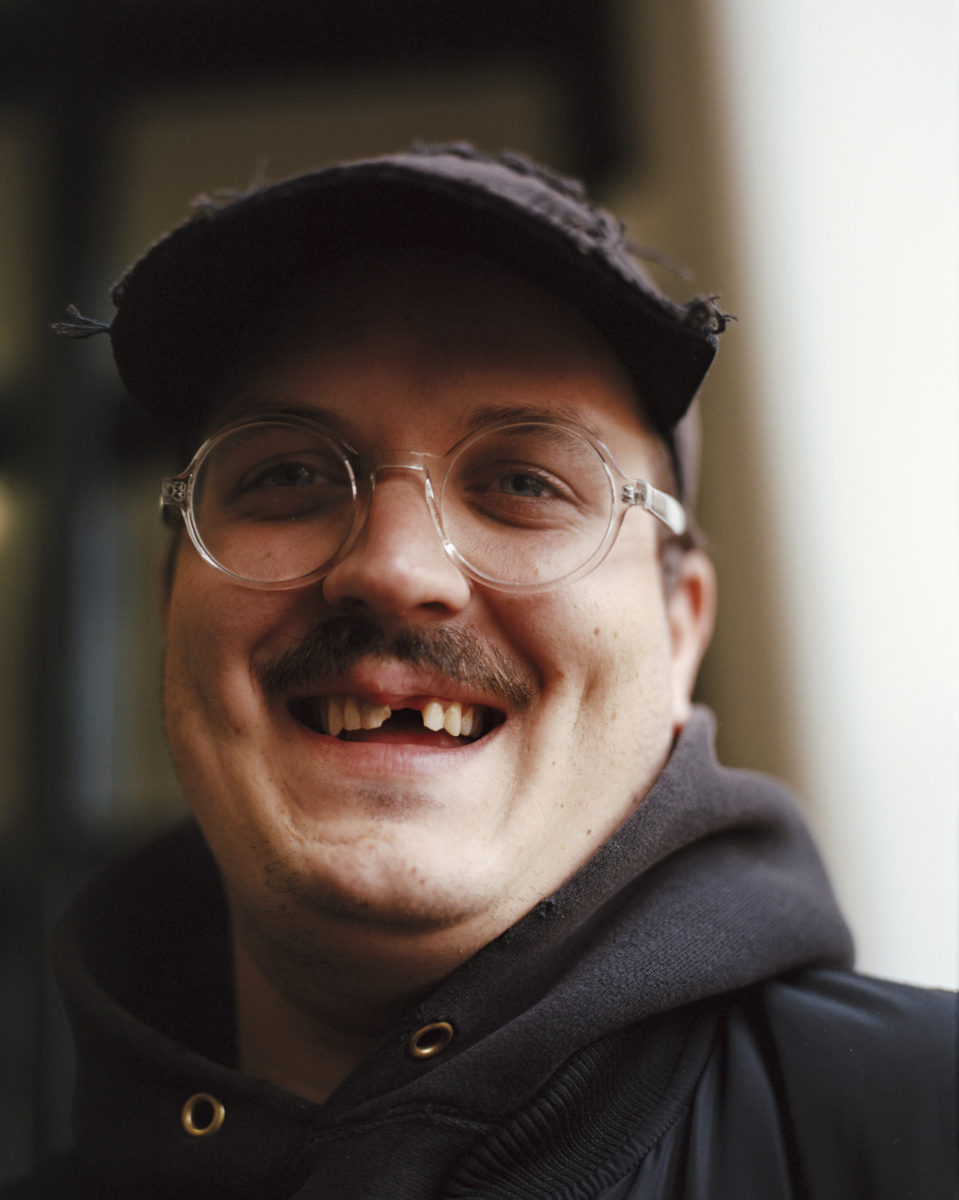
SC: So in regards to images, are there any other films or pictures that influence what you do?
LH: Well I have these images in a folder on my computer and then I’ll sit there and go through them all – but I try not to print them out. I quite like the idea that my research is my interpretation of the research or my memory of it, rather than having the physical moodboard. I find that limiting because if I have it there in front of me all the time, I’ll try and make my work exactly like that. Whereas if I don’t print, it’s like my spin on the images, a distortion.
SC: How has the industry changed in the last few years?
LH: That’s a difficult one to answer really because I’ve only been doing it for 3 years. So, I don’t know what it was like before. I guess I had preconceptions of it but I don’t know if it has changed in the last three years or if it has always been a constantly changing thing. I’ve definitely changed though. I’ve got slightly more serious – not too much more. I’ve definitely grown up a bit. I think I’m still working out where I want to go, want I want to do but when you come into it straight after university and you’re like, “Fashion designer – sure, let’s do that.” And then as time goes on, your eyes open to different ways of doing it, different business structures. You go beyond, “What do I want to do?” and you start thinking, “How do I want to build a business?”
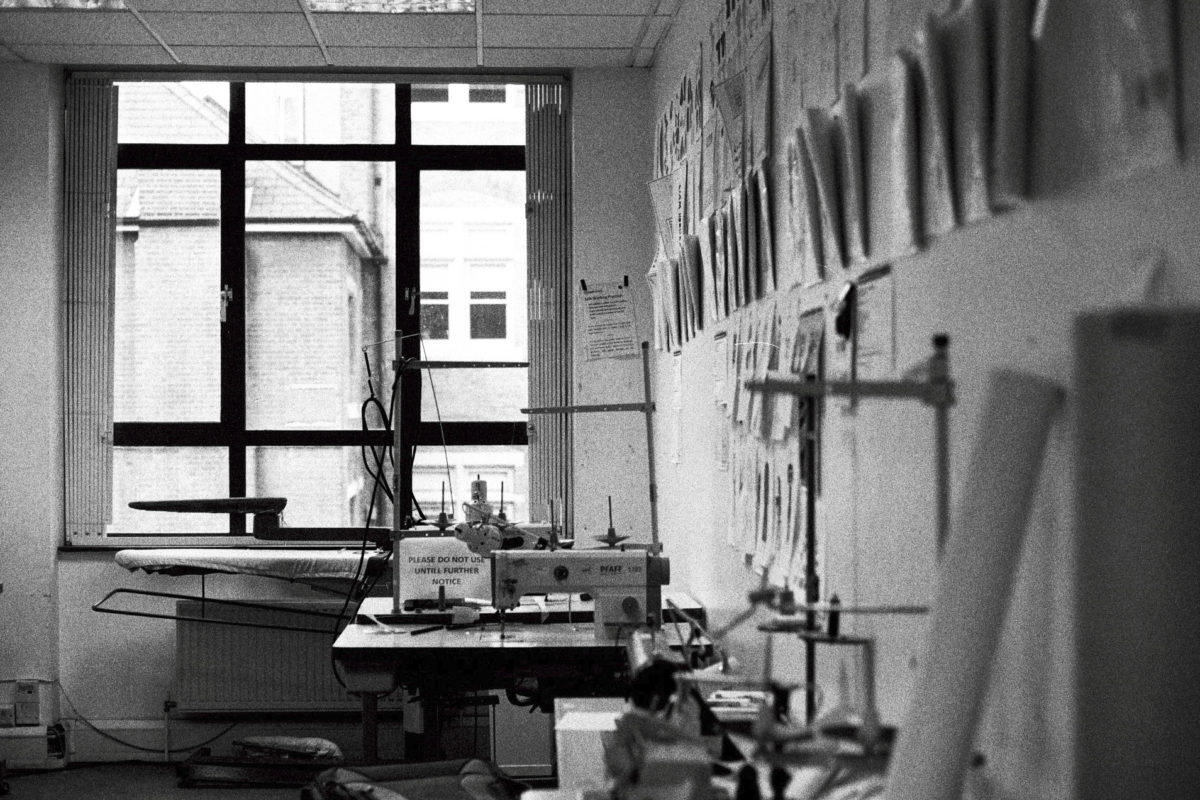
SC: Any designers in the industry that you particularly like?
LH: All of them because they’re doing it. Anyone who has the bollocks to go and do it deserves to be respected.
SC: What does London, particularly Mare Street, offer you as the site of your studio?
LH: Well, this place is free! I liked the Walthamstow studio but it was a fucking nightmare. It’s just so far away from everything – it was like 20 minutes to the station and then I’d always miss the train. So yeah, here is closer to stuff and it’s a different thing because it’s in the university, you know? It’s definitely made me more organised. I can’t stay here until 4am, so shit has to be done before 9pm. And that’s good, but there are times when I just want to stay here and chill out, get a load of beer and work stuff out.
SC: What is your favourite place to relax?
LH: Are you signing me up for a dating website? I’d say in a pub. I guess I’d say Bardens in Dalston because it’s next to my house.
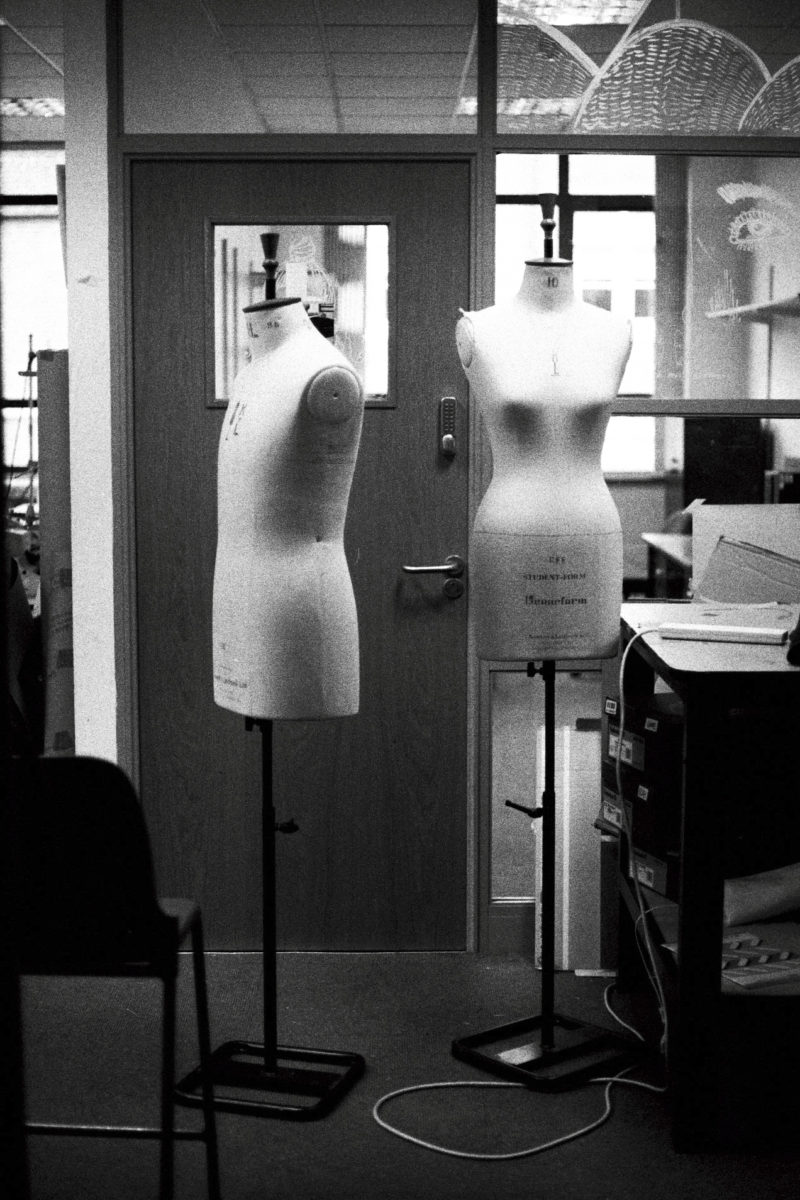
SC: What’s your favourite place to shop?
LH: Nisa Local.
SC: What’s your favourite restaurant?
LH: I’ve got a few favourite restaurants to be honest. Maybe Fingers Crossed for a Sunday brunch. Banging.
SC: Where would you live if not London?
LH: That’s something I’m trying to work out. I’m not sick of London, but just I don’t know if I want to be here forever. When I was younger, I always wanted to live somewhere else. I always wanted to live in another city. I can’t do that now – or can I? If not London, maybe Tokyo, that’s pretty sick. New York would be good.
Interview by Oliver Zarandi | Photography by Steph Wilson